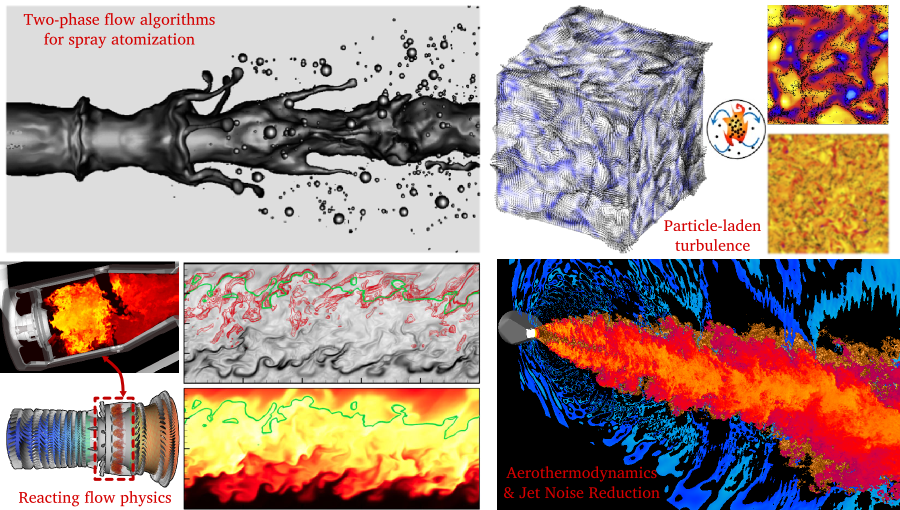Research
Did you know?The term Large Eddy Simulation, LES, was first coined by Bill Reynolds when he and his colleagues pioneered the introduction of LES in the engineering community here at CTR. |
Did you know?Before Joel Ferziger and Bill Reynolds pioneered LES at CTR, they rose to prominence in areas of neutron and radiation transport theory as well as nuclear energy policy and heat transfer. |
Did you know?Steve Kline first recognized coherent structures in water tunnel flow visualizations of turbulence. Parviz Moin and John Kim first found these streaky coherent structures in numerical simulations of wall turbulence. |
Did you know?Dean Chapman, a founding member of the CTR Steering Committee, used large-scale computers to determine that Australian tektites originated from the Rosse ejecta ray of the Tycho crater on the moon. |
Did you know?American astronaut Stephen K. Robinson studied the coherent structure of turbulence at CTR and would later remove two gap fillers on Space Shuttle Discovery's heat shield to forestall transition to turbulence upon reentry.Current Research Programs |
Current Research Programs
At CTR, we study turbulence physics in complex multi-scale flows, including effects of combustion, acoustics, multi-phase interfaces and shock waves. Current research projects include: particle-laden flow in radiatively heated environment as part of the Stanford PSAAP-II Exascale Computing Engineering Center; combustion and turbulent reacting flows; aeroacoustics; two-phase flow, including microbubble generation by breaking waves and particle-laden flows; drag reduction using superhydrophobic surfaces; supersonic jet noise and airframe noise; shock-induced mixing in multi-material flows; thermoacoustic instabilities; hypersonics; active flow control; uncertainty quantification; large-eddy simulation; sub-grid-scale modeling for multi-physics flows; wall-modeling for large-eddy simulation of high-Reynolds number flows; computational linear algebra. Cross disciplinary research is emphasized at CTR, especially in the areas of numerical analysis and parallel computing of turbulent flows and validation with physical experiment.

Cross-disciplinary research at CTR to understand the fundamental physics of turbulent flows in complex engineering devices.
Computational Resources and Experimental Facilities
Through the High Performance Computing Center at Stanford University, CTR researchers and long-term visitors have access to a variety of large computer clusters. In particular, the Certainty cluster with more than 10,000 cores and a 3x3 tile-display visualization cluster are available.
 Certainty cluster with more than 12,000 cores. |
 Visualization clusters and 3x3 tile display wall in action. |